Recent data from Jobs & Skills Australia (JSA), published in The Australian, showed that there were an abundance of applicants per job, suggesting that concerns around labour shortages are overblown.
At the economy-wide level, there were 29.3 applications per vacancy, 9.4 qualified applicants per vacancy and 4 suitable applicants per vacancy:
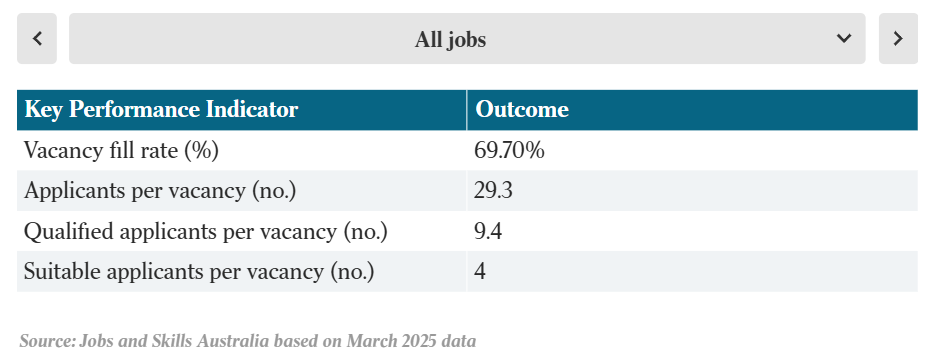
Separate recruitment difficulty data from JSA also suggested that labour shortages were tracking at pre-pandemic levels, with Australia oversupplied with low-skilled workers.
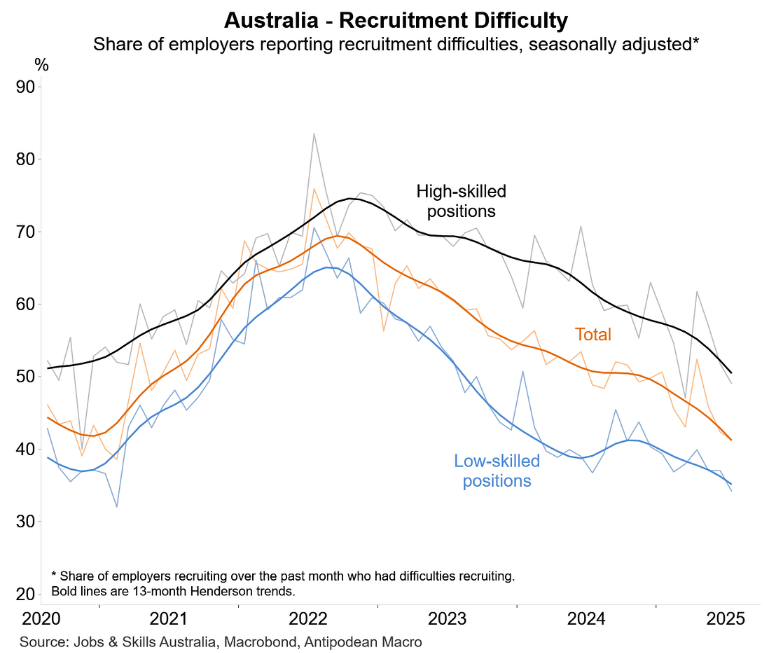
While the macro picture seems fine, labour shortages appear to be more prevalent among blue-collar roles in the trades.
For technical and trade roles, there were 22.7 applications per vacancy, 6.8 qualified applicants per vacancy and 2.9 suitable applicants per vacancy:
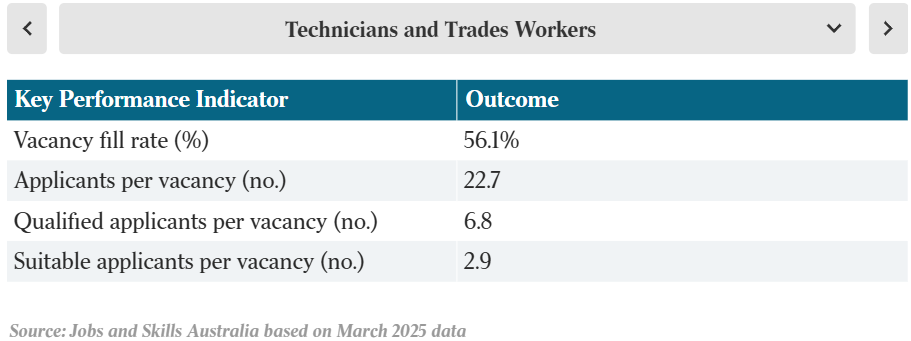
For labourers, there were 16.5 applications per vacancy, 4.5 qualified applicants per vacancy and 2.4 suitable applicants per vacancy:
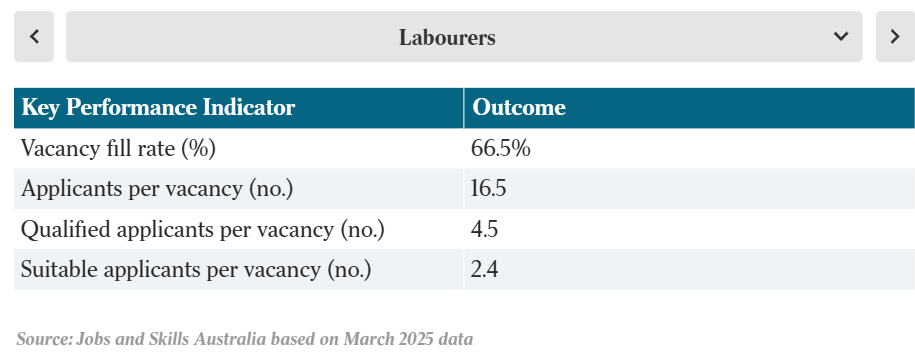
Shortages in these areas are obviously a concern, given the federal government has set a fantastical housing target of building 1.2 million homes over five years. The government also has set a fantastical 82% renewable energy target by 2030, which will require masses of transmission, generation and storage to be built.
These areas will obviously require workers to man the tools.
Alex Joiner, chief economist at IFM Investors published the following chart showing that the overwhelming majority of migrants landing in Australia are unskilled:
Joiner added the following chart showing that the overwhelming majority of net overseas migration has been unskilled:
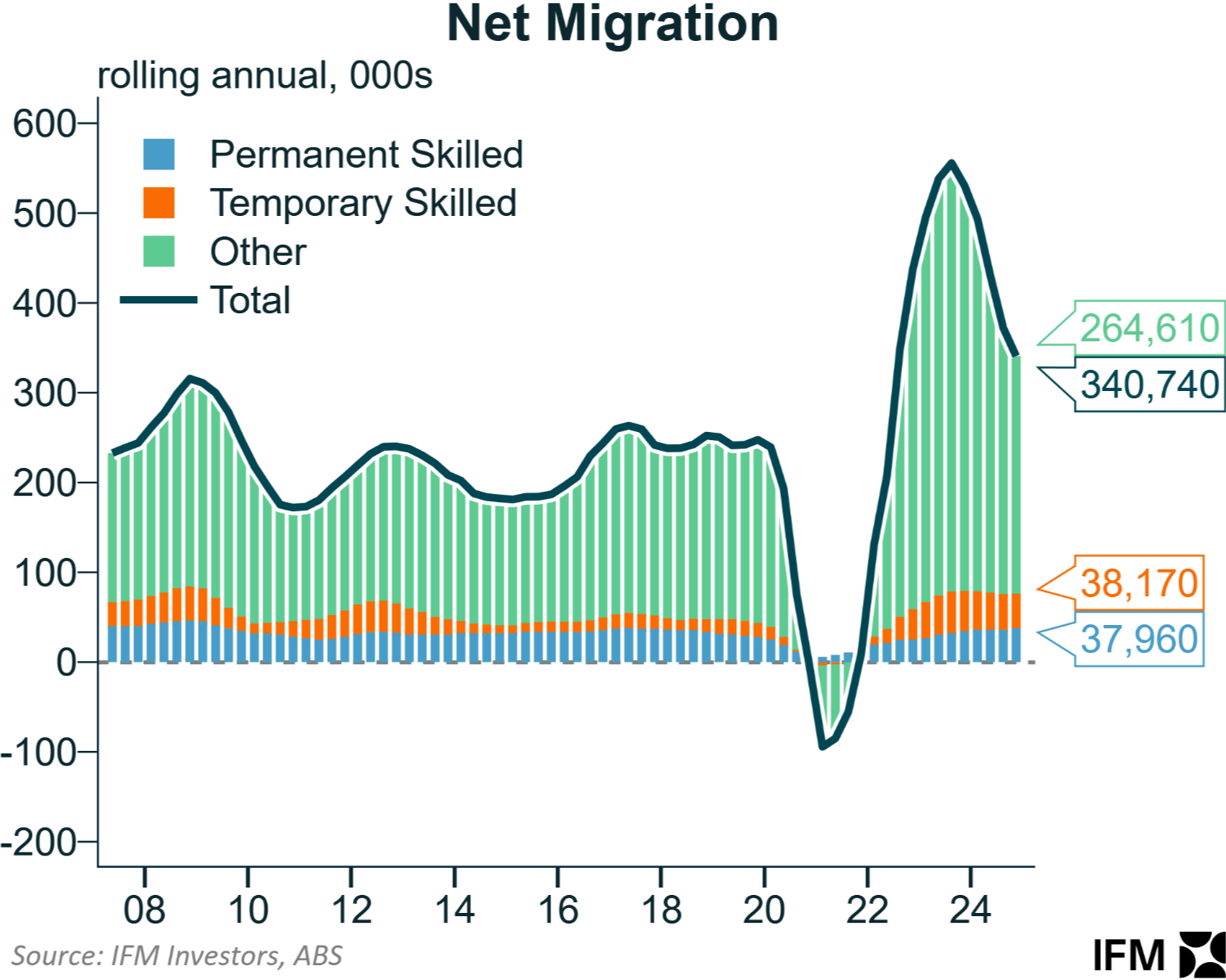
University of Sydney Associate Professor Salvatore Babones, who authored the 2021 book Australia’s Universities: Can They Reform?, highlighted the skills problem in an op-ed last week in The AFR:
Contrary to popular perceptions, most immigration to Australia is not high-skilled permanent migration. Most immigrants are here on working holiday and student visas.
Working holiday visa grants alone now outnumber skilled migrant visas granted each year…
Working holiday makers can now stay for up to three years, and the new “work and holiday” visa is open to young people from China, India, Brazil, Thailand and other developing countries.
These visas maintain the charade that their recipients are coming for “an extended holiday in Australia”. That is to say, a holiday spent working in a kitchen, delivering food, or providing aged care.
But the true behemoth is the student visa program. There are roughly a million international students in Australia, only half of whom actually study at universities. The rest attend cooking schools, hospitality schools, language schools, and other non-degree institutions.
An additional 200,000 are in Australia on post-study “temporary graduate” work visas.
All told, foreign youngsters now make up more than 10 per cent of Australia’s total labour force – and they’re not working high-skill, high-productivity jobs. Anyone living in a capital city who has ever taken an Uber, ordered Uber Eats, visited a restaurant, hired a removalist, needed home care, or driven past a lollipop girl knows the truth.
As a result, a record 9% of Australia’s population are on temporary visas, mostly unskilled:
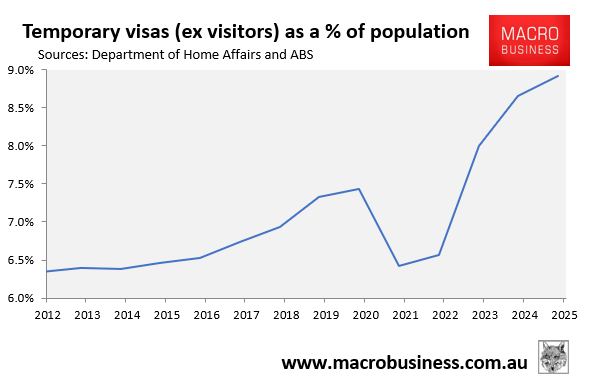
Few of these visa holders work in areas experiencing genuine skills shortages.
New analysis from job management platform NextMinute shows that visa holders comprise a tiny percentage of workers in the trades:

Source: NextMinute
“The United Kingdom supplies the largest share of Australia’s tradie visa holders, with 1,312 skilled workers across key occupations (7.47%), followed by India with 699 (3.98%) and South Africa with 633 (3.61%)”, NextMinute’s media release said.
However, the lion’s share of migrants entering Australia come from non-English speaking background (NESB) nations, primarily via the student visa pathway.
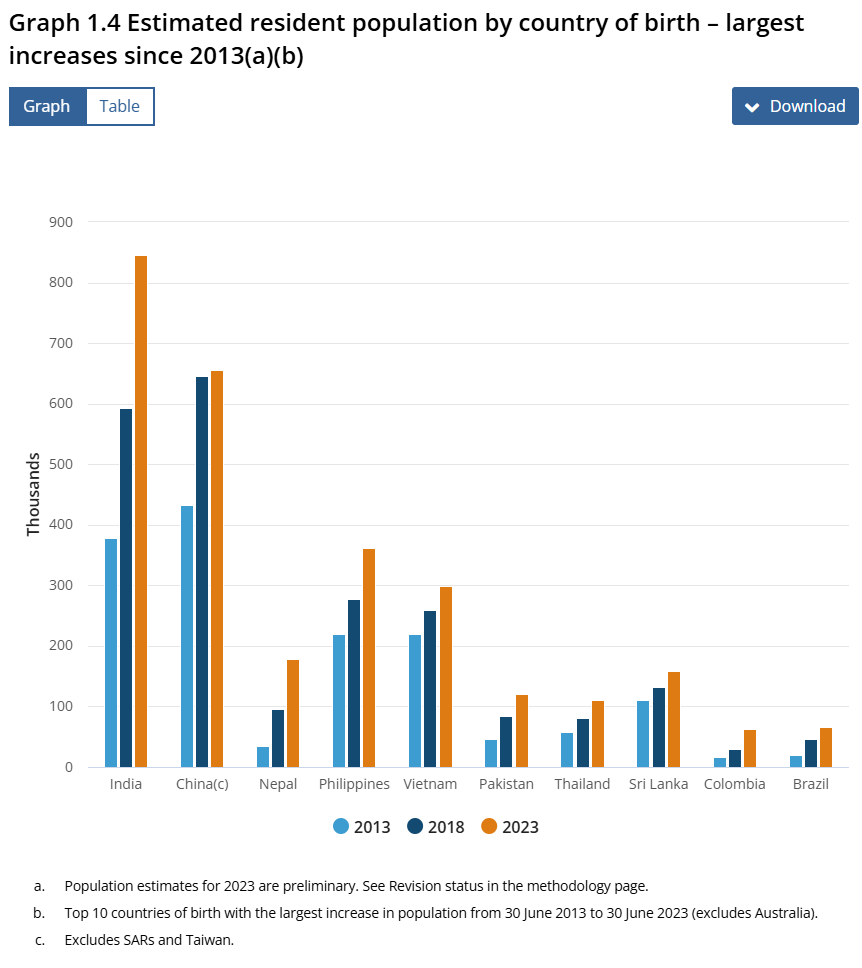
In reality, Australia’s migration system primarily imports low-skilled workers from NESB nations to fill low-paid and low-productivity service jobs.
Australia is importing the wrong skills while adding to housing and infrastructure strains and delivering lower productivity growth.

